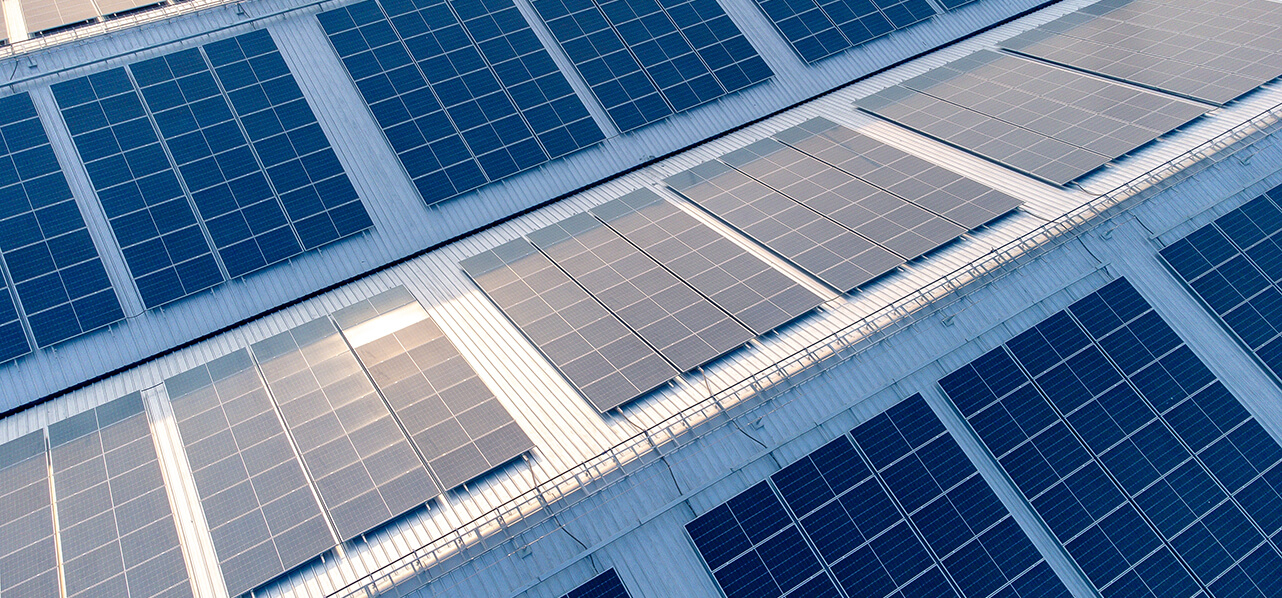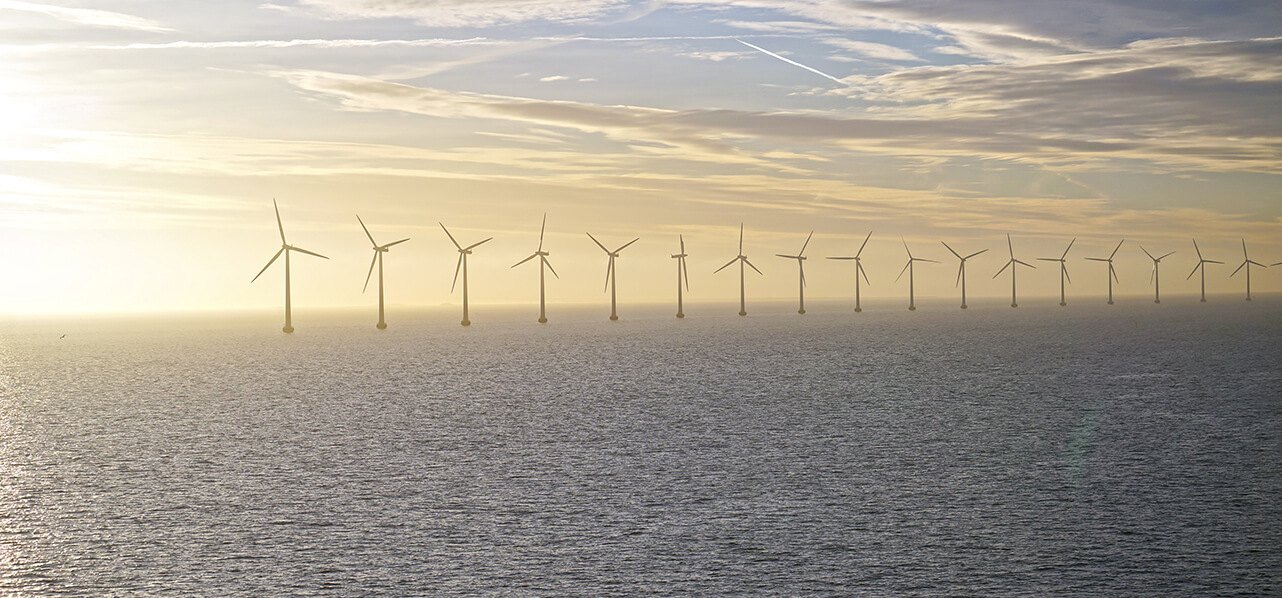Partner Italy
On 9 August 2019, the new decree regulating the methods of incentivising the production of energy from plants powered by renewable sources, including solar photovoltaics, was published in the Official Gazette No. 186 (the “New FER Decree”) by the Ministry of Economic Development, acting in association with the Ministry for the Environment and Protection of the Territory and the Sea. The New FER Decree entered into force on 10 August 2019.
The New FER Decree arises from a consultation with trade associations and represents the first step of a wider Government strategy, in addition to the provisions contained in the DEF (Economic and Financial Document), which will have the National Integrated Plan for Energy and Climate as its general framework.
Scope of the New FER Decree
The New FER Decree is directed only at the most technologically and commercially advanced renewable sources (namely, hydroelectric, geothermal and gas residues from purification processes, as well as solar photovoltaic and onshore wind energy), delegating to subsequent decrees the regulation of the methods of incentivising the production of energy from sources presenting significant innovation in the national context, and therefore still having high fixed costs and longer development times.
The New FER Decree reproduces the basic approaches of the Previous FER Decrees, in particular, the provision of:
- an average annual indicative cost of incentives (equal to Euro 5.8 billion);
- access mechanisms to incentives through registration on specific registers (“Registers”) and participation in descending auctions (“Auctions”); direct access is no longer applicable; and
- incentivised power capacity thresholds.
The 2016 FER Decree will continue to apply:
- with reference to the regulation:
- to plants duly registered in the rankings formed as a result of the Auction and Register procedures carried out pursuant to the 2016 FER Decree; and
- with reference to the incentive tariff
- to newly built plants duly registered on a Register under the New FER Decree, which do not avail themselves of certain priority criteria, or to which certain priority criteria[1] do not apply, and which have entered into operation within one year after the entry into force of the New FER Decree, without prejudice to the application of any deduction offered pursuant to Art. 10, paragraph 3, lett. c) of the 2016 FER Decree (i.e. plants requiring a tariff equal to 90% of the one set forth in the relative Annex 1).
Term for accessing the incentive mechanisms
Under the New FER Decree, acceptances to participation requests for accessing the incentive mechanisms will cease on whichever comes first of the following dates:
- the closing date of the last Auction or Register procedure; or
- after 30 days from the date on which an average annual indicative cost of the incentives equal to Euro 5.8 billion has been reached and calculated in compliance with the terms of the 2016 FER Decree, also taking into account the costs of the energy produced from photovoltaic plants incentivized under the New FER Decree.
Incentive mechanisms and access methods
With regard to the access to the incentives, the New FER Decree provides for the elimination of direct access, while the Auction and Register procedures remain in place and continue to be distinguishable on the basis of:
- the plant’s power capacity: in accordance with the New FER Decree, the threshold power value (i.e. the power value that marks the distinction between Register or Auction procedures as routes of access to the incentives) is set at 1 MW;
- the category of intervention: new construction plants, fully rebuilt and reactivated plants, or plants subject to upgrade or revamping/refurbishment.
Plants have access to the incentives provided that the communication of the start of the works, sent to the competent administration, shows that the works started after the plant was registered in an eligible position in the Auction’s or Register’s rankings, subject to certain exceptions[2].
It should also be noted that access to the incentives referred to in the New FER Decree is an alternative to the mechanisms of net-metering (scambio sul posto) and mandatory purchase regime (ritiro dedicato).
However, in addition to this, the New FER Decree announces some relevant innovative content.
Determination of incentive tariffs and incentives
The value of the incentive tariffs for newly built plants under the New FER Decree and the period of entitlement to the tariff mechanisms (such period being equal to the conventional average useful lifespan of the plants – this ranges (net of any stops[3]) from 20 to 30 years for each source, type of plant and power class) are set out as follows (Annex 1 of the New FER Decree)[4]:
| PLANTS | TYPE | POWER | USEFUL LIFESPAN | TARRIFF |
| kW | YEAR | €/MWh | ||
| Wind | On-shore | 1<P≤100 | 20 | 150 |
| 100<P<1000 | 20 | 90 | ||
| P≥1000 | 20 | 70 | ||
| Hydro | Flowing water (including aqueduct systems) | 1<P≤400 | 20 | 155 |
| 400<P<1000 | 25 | 110 | ||
| P≥1000 | 30 | 80 | ||
| Basin or tank | 1<P<1000 | 25 | 90 | |
| P≥1000 | 30 | 80 | ||
| Gases left over from the purification processes | 1<P≤100 | 20 | 110 | |
| 100<P<1000 | 20 | 100 | ||
| P≥1000 | 20 | 80 | ||
| Solar photovoltaic | 20<P≤100 | 20 | 105 | |
| 100<P<1000 | 20 | 90 | ||
| P≥1000 | 20 | 70 | ||
When considering plants subject to full reconstruction, reactivation, revamping, upgrading and hybrid plants, reference should be made to Annex 2 of the 2016 FER Decree.
In case the incentives are waived before the end of the period of entitlement, the responsible entity will be required to return the net incentives received up to the time of exercise of the option.
The tariff due is calculated by applying a percentage reduction, equal to the reduction offer made by the producer in the framework of the Auction and Register procedures, to the relevant incentive tariff. The tariff shall be further reduced in cases expressly provided for by the New FER Decree, including, by way of example only, delays concerning the entry into operation, obtaining capital grants, and the use of regenerated components.
Without prejudice to plants opting for the all-inclusive incentive tariff regime where applicable (namely, plants with a capacity of up to 250 kW), under the New FER Decree the tariffs are a “two-track” type, in which the producer is given the difference between (i) the tariff due and (ii) the hourly zonal price for electricity, provided such difference is positive. In the event that the difference is negative, the GSE makes the necessary adjustments or requests the producer to return the relative amounts.
Methods and timing of Auction and Register procedures
Without prejudice to the deadline for accessing the incentive mechanisms, under the New FER Decree the GSE publish the tender notices for the Auction and Register procedures according to the deadlines outlined below
| Procedure No. | Date of opening the call |
| 1 | 30 September 2019 |
| 2 | 31 January 2020 |
| 3 | 31 May 2020 |
| 4 | 30 September 2020 |
| 5 | 31 January 2021 |
| 6 | 31 May 2021 |
| 7 | 30 September 2021 |
The application deadline is 30 days from the date of publication of the relevant tender notice, whilst the ranking will be formed and published on the GSE website within 90 days from the call for tender’s closing date.
Contrary to the provisions of the previous regulations, the tender notices concerning the Register and Auction procedures are organized in 4[5] and 3[6] “Groups” respectively, according to the so-called criterion of “technological neutrality”. As a result, technologies offering the same investment costs and operating costs must be considered jointly.
In case of total or partial revamping specific Register and Auction procedures are envisaged.
Incentivised Power Capacity
The New FER Decree provides that only a specific amount of installed power capacity may benefit from incentives. However, these amounts are now differentiated based on: (i) the relevant tender notice, (ii) the Group to which the plant belongs and (iii) the mechanism of access to incentives.
The maximum incentivised capacities are set as follows:
| Incentivised capacity for plants that request incentives by means of the Register | Incentivised capacity for plants that seek incentives via Auction | ||||||
| Procedure No. | Group A [MW] | Group A-2 [MW] | Group B [MW] | Group C [MW] | Group A [MW] | Group B [MW] | Group C [MW] |
| 1 | 45 | 100 | 10 | 10 | 500 | 5 | 60 |
| 2 | 45 | 100 | 10 | 10 | 500 | 5 | 60 |
| 3 | 100 | 100 | 10 | 10 | 700 | 10 | 60 |
| 4 | 100 | 100 | 10 | 10 | 700 | 15 | 60 |
| 5 | 120 | 100 | 10 | 20 | 700 | 15 | 80 |
| 6 | 120 | 100 | 10 | 20 | 800 | 20 | 100 |
| 7 | 240 | 200 | 20 | 40 | 1600 | 40 | 200 |
| TOTAL | 770 | 800 | 80 | 120 | 5500 | 110 | 620 |
Registration procedure provided for by the New FER Decree
Pursuant to the New FER Decree, the responsible entity must specify any percentage reduction offered on the relevant tariff, up to a maximum of 30%.
The GSE will analyse the requests and publish the list of plants that are eligible for the incentives on its website. The GSE Register will be compiled by applying the specific priority criteria listed under Art. 9.2 of the New FER Decree[7].
If the number of valid applications for registering on the Register of one of the Groups “A” and B” are lower than the available quota and, at the same time, the number of valid applications for registering on the Register of the other Group are higher than the available quota, then the unused power will be transferred to the other Group, subject to compliance with certain conditions.
The plants listed (“posizione utile”) in the GSE Register will be eligible to receive incentives only if they start operating (“entrano in esercizio”) within the relevant time period below, which begins to accrue from the date on which the relative ranking list is published:
| Months | |
| Wind on-shore | 24 |
| Hydro (*) | 31 |
| Solar photovoltaic (**) | 19 |
| Other sources and plants | 31 |
| (*) For hydroelectric plants with geological works in tunnels aimed at improving the environmental impact, the deadline is 39 months
(**) For group A-2, the deadline is 24 months. For plants owned by a Public Administration, the deadlines are extended by 6 months. |
|
Failure to start operating by the deadline will cause the incentive to be reduced by 0.5% for each month of delay, up to 6 months.
After the mentioned deadline has elapsed, the plant will no longer be eligible to receive the incentives and will be removed from the Register. Nevertheless, pursuant to Article 10.3 of the New FER Decree, for plants that do not enter into operation within the terms indicated above and that forfeit the right to access the incentives, but that are subsequently readmitted to the incentive mechanisms with another procedure, the tariff offered is reduced by 5% compared to the tariff applicable at the date of entry into operation of the plant.
When applying to the Register, plants with a capacity of more than 100 kW are required to file a provisional deposit equal to 50% of the definitive deposit. This deposit, in the event a plant is successfully ranked, must be replaced by a definitive deposit issued by a bank in the form of a bank guarantee (“fidejussione”). For these purposes, the definitive deposit should be equal to 2% of the investment costs envisaged for the construction of the plant, conventionally set to 90% of the costs referred to in Table I of Annex 2 of the 2016 FER Decree, or 1000 Euro per kW for photovoltaic plants.
Auction procedure under the New FER Decree
Similar to the Previous FER Decrees, the New FER Decree has specific financial requirements which need to be met in order to take part in the Auction procedures. In particular, bidders must submit to the GSE:
- a declaration from a financial institution certifying the economic trustworthiness of the company in relation to the specific project for which incentives are required, or an undertaking to finance the project; or
- minimum capitalisation levels, depending on the size of the investment.
The Auction is carried out by submitting descending offers based on a percentage reduction within the reference rate between 2% and 70%. In the event that one or more offers with a 70% reduction in value are received in one procedure, offers with a reduction of more than 80% will be excluded in the next procedure. In the event that one or more reduction offers at 80% value are received in subsequent procedures, the following procedures will exclude reduction offers above 90%.
When registering for the Auction procedures, bidders are required to file a provisional deposit equal to 50% of the definitive deposit. In the event a plant is successfully ranked, this deposit must be replaced by a definitive deposit issued by a bank, in the form of a bank guarantee (“fidejussione”), for an amount equal to 10% of the investment costs envisaged for the construction of the plant for which the bid is made (such amount is pre-determined according to the provisions of the 2016 FER Decree) conventionally set to 90% of the costs referred to in Table I of Annex 2 of the 2016 FER Decree, or 1,000 Euro per kW for photovoltaic plants[8].
The ranking is based on the criterion of the offer’s greater percentage reduction and, in the event the same reduction is offered, on the priority criteria provided for by Article 14.4 of the New FER Decree[9].
The winning plants will be eligible to receive the incentives only if they start operating (“entrano in esercizio”) within the specified time period below, which begins to accrue from the date on which the outcomes of the Auction are published:
| Months | |
| Wind on-shore | 31 |
| Solar photovoltaic | 24 |
| Other sources and plants | 51 |
After such terms have elapsed, the plants will no longer be entitled to incentives and the GSE enforces the deposit.
In addition to the Auction procedures, plants located in the territory of a Member State of the European Union or of a third State bordering Italy shall be entitled to participate as long as they export for tax purposes their electricity production to Italy (subject to a prior free trade agreement).
Main changes
- Photovoltaic plants
We would highlight the return of photovoltaics as among the main innovations. In particular, the New FER Decree establishes access to incentives for photovoltaic plants with a nominal capacity of more than 20 kW. In order to participate in the Auction and Register procedures, photovoltaic plants must, in addition to the specific requirements for participating in Auction procedures: a) be newly built and use brand-new components; and b) comply with the provisions on the prohibition of access to state incentives for plants with modules located in agricultural areas.
- Hydroelectric plants
A noteworthy innovation concerns the requirements that need to be met for a hydroelectric plant to access the incentives. In particular, except for cases of refurbishments that do not result in an increase in the average concession capacity, hydroelectric plants may be granted with the incentives if one of the following conditions is met:
- the construction characteristics referred to in Article 4(3)(b)(i), (ii), (iii) and (iv) of 2016 FER Decree is complied with, to be demonstrated by means of a specific certificate issued by the body responsible for issuing the derivation concession, where not already specified in the concession title or in the relevant regulations; or
- the derivation concession complies with the Guidelines for ex ante environmental assessments of water derivations, approved by means of Directorial Decree No. 29 / STA of 13 February 2017, and with the Guidelines for the updating of the minimum vital outflow determination methods, approved by means of the Directorial Decree No. 30 / STA of 13 February 2017. Compliance is verified and declared by the National Environmental Protection System (SNPA) at the concessionaire’s request and for the sole purpose of accessing the tariffs referred to in the New FER Decree, in support of the granting authority, on the basis of a specific inquiry. The concessionaire is required to attach the outcome to the documentation to be transmitted to the GSE for the purposes of participating in the Auction and Register procedures. The applicant shall bear the SNPA’s compliance investigation costs.
- Asbestos premium
Another noteworthy innovation is the 800 MW of power capacity made available for a specific Group of projects in the context of Registration procedures: photovoltaic plants installed in lieu of asbestos (i.e. Group A-2). As stated in the New FER Decree, Group A-2 includes photovoltaic plants with a nominal capacity below 1 MW whose modules “are installed in place of roofs of buildings or rural buildings as to achieve complete removal of eternit or asbestos”. The total area covered by the panels must not, however, be wider than the replaced area. For these installations, the New FER Decree provides for an integration by introducing a premium of 12 Euro per MWh, granted on the whole energy produced. In addition to the aforementioned premium, with reference to plants with a capacity up to 100 kW installed on buildings, a net premium of 10 Euro per MWh is granted to the portion of net production consumed on site. The premium is granted ex post upon the condition that, on an annual basis, the energy consumed by the producer exceeds 40% of the plant’s net production.
- Long-term agreements (long-term PPAs)
Alongside traditional support regimes, new schemes are promoted in order to favour the purchase and sale of energy from renewable sources through long-term agreements, such as the preparation of an ad hoc platform. The New FER Decree also aims to encourage the application of these agreements for the procurement of renewable energy in the public administration by providing for the drafting of an inter-ministerial decree defining specific measures and procedures on buying and selling for public administration by means of a Consip auction.
- Verification of the requests
A verification of requests for participation in the Auction and Register procedures, prior to the publication of the rankings, is envisaged in order to reduce the risk of litigations and to give greater certainty and stability to the same rankings.
- Plant aggregates
Register and Auction procedures may also be participated in by “aggregates of plants” belonging to the same Group (i.e. consisting of several newly built plants, located throughout the national territory) in compliance with the following unit power limits: from over 20 kW of unit power, and overall power less than 1 MW for registration on the Registers; and from over 20 kW to 500 kW of unit power, as long as overall power is equal or higher than 1 MW for the Auctions.
- Transfer to third parties of a Plant awarded by the Registration or Auction procedure
Finally, it should be noted that, pursuant to the New FER Decree, it is possible to transfer a plant that has won the Register and Auction procedures to third parties, even before it enters into operation and executes the relevant convention with the GSE, provided that the tariff due is reduced by 50%.
Final notes
Having come to light after a long gestation, the New FER Decree contributes, although within the limits that have emerged, to give new confidence to investors in the sector and an important signal for the achievement of the ambitious objectives embraced by the SEN (National Energy Strategy).
The New FER Decree represents, without doubt, a valid investment opportunity for those having a building with a roof in eternit, considering that it is provided for the possibility of relying on both an ad hoc capacity threshold and an additional premium on all the energy produced; not to mention the increase in the real estate value of the building. Another opportunity, entailing environmental benefits for the entire territory, is represented by the priority given to plants built on landfills, quarries and disused mines (although interpretative doubts may be casted not only as to the relevant categories, but also in relation to the practical difficulties of connection to the national grid in these areas).
While the New FER Decree provides for certain favourable proposals, some other appears to be, however, far less incentivising. These latter include the abolition of the direct access mechanism, at least in relation to smaller initiatives concerning small-size plants, and the articulated access procedures envisaged also for small-size plants.
Concerns also arise from the continuing “incentive ban” for ground-mounted photovoltaic plants installed on agricultural areas, having been clarified by several studies that the use of even only 10% of unused agricultural areas (so-called SANU) would allow the production of significant amounts of energy from renewable sources.
Special attention should be paid to the regulation for the realisation of a market platform for the purposes of negotiating the so-called long-term PPAs.
In the background, a sector that, thanks to technological development and experience accumulated over time by operators, is increasingly maturing the status of “self-sufficiency” (i.e. grid parity), and that observes the New FER Decree with interest, but conscious detachment.
[1] Ref. Article 9, paragraph 2, letters a), d), e) and f) of the New FER Decree.
[2] Ref. Article 3, paragraph 4 of the New FER Decree.
[3] The provision of incentives is also suspended in the hours in which the zonal hourly prices equal to zero are recorded, for a period of more than 6 consecutive hours. The period of entitlement to the incentive mechanisms is therefore calculated net of the total hours in which the suspension was recorded. The same provision refers to the case in which negative prices are recorded, when they will be introduced in the Italian electricity market regulation.
[4] Pursuant to the New FER Decree, the values shown in the table are reduced, as from 1 January 2021, by 2% for Group B plant types and 5% for Group A plant types.
[5] With reference to the Register procedures: (i) Group A: photovoltaic and wind power plants; (ii) Group A-2: photovoltaic plants whose modules are installed in lieu of building or rural buildings coverings on which complete removal of the eternit or asbestos is performed. The surface of the modules cannot be wider than the surface of the covering removed; (iii) Group B: hydroelectric and residual gas plants for purification processes; and (iv) Group C: wind and Group B plants subject to total or partial revamping.
[6] With reference to the Auction procedures: (i) Group A: photovoltaic and wind power plants; (ii) Group B: hydroelectric and residual gas plants for purification processes; and (iii) Group C: wind and Group B plants subject to total or partial revamping.
[7] Among the priority criteria, for Group A, it is worth mentioning the construction of plants on closed and restored landfills and lots of landfills, quarries that are not susceptible to further extractive exploitation and that comply with the requirements of Article 9, paragraph 2, letter a) of the New FER Decree.
[8] With regards to the aggregates of plants, the capitalization’s and deposits’ amount is halved.
[9] Among the priority criteria, for Group A, it is worth mentioning the construction of plants on closed and restored landfills and lots of landfills, quarries that are not susceptible to further extractive exploitation and that comply with the requirements of Article 14, paragraph 4, letter b) of the New FER Decree.






